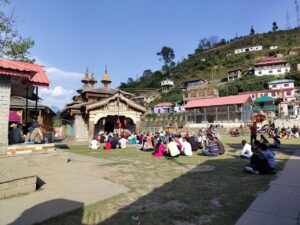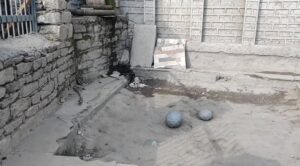Unveiling the Enigmatic History and Sacred Significance
In the serene foothills of the Himalayas, amidst the whispering pines and the gentle rustle of leaves, lies the Mahsu Devta Temple, a sanctuary that has stood the test of time. This 1000-year-old temple is not just a religious edifice; it’s a testament to faith, heritage, and the mystical allure of Uttarakhand, India. Join us as we embark on a spiritual journey to unravel the enigma that is the Mahsu Devta Temple.
The Origins of Devotion
A Glimpse into Ancient Legends
Our voyage begins with the origins of devotion that gave birth to the Mahsu Devta Temple. According to local legends, this sacred shrine was established in the 8th century by Raja Sahil Varman, the founder of Chamba. It is said that the deity, Mahsu Devta, appeared in his dreams and urged him to construct a temple in his honor. Thus, the temple came into existence as a symbol of unwavering faith.
Architectural Marvel
A Blend of Artistry and Spirituality
As we step closer to the temple, its architectural grandeur leaves us in awe. The temple’s construction showcases remarkable craftsmanship, with intricate wood carvings and exquisite stone masonry. The blend of local Pahadi style and architectural finesse creates an ambiance of both divinity and historical significance. The temple’s intricate wooden structure is a testament to the region’s rich artistic heritage.
Mahsu Devta: The Deity
Understanding the Divine Guardian
Mahsu Devta, the presiding deity of the temple, is revered as the protector of the region. Devotees believe that he safeguards them from natural calamities and brings prosperity to their lives. His idol, adorned with traditional attire and ornaments, exudes a sense of power and benevolence that draws pilgrims from far and wide.
Spiritual Significance
A Pilgrimage of Faith and Healing
The Mahsu Devta Temple holds profound spiritual significance for the locals and pilgrims alike. Many visit this temple seeking blessings for a bountiful harvest, relief from ailments, and overall well-being. It’s believed that the deity listens to the prayers of the devout and grants their wishes, making it a place of solace and hope.
Festivals and Celebrations
Diving into the Vibrant Culture
The temple comes alive during festivals, especially during the annual Mahsu Devta fair. This lively celebration features traditional dances, music, and a bustling bazaar, creating an atmosphere of joy and cultural richness. It’s a perfect time for tourists to immerse themselves in the local culture and witness the vibrant spirit of the region.
Trekking and Adventure
A Thrilling Journey to the Divine
For adventure enthusiasts, a trek to Mahsu Devta Temple is an experience like no other. The trekking trail, surrounded by lush forests and panoramic views of the Himalayas, offers a unique opportunity to connect with nature while on a spiritual quest.
Preservation Efforts
Guardians of Heritage
Efforts are being made to preserve the Mahsu Devta Temple and its surroundings. Various organizations and government bodies are working together to ensure that this historical and spiritual gem remains intact for future generations. This collaborative approach is vital in maintaining the temple’s sanctity.
Conclusion
A Divine Haven in the Himalayas
In conclusion, the Mahsu Devta Temple stands as a testament to the enduring power of faith and the rich cultural heritage of Uttarakhand. Its mystical aura, stunning architecture, and spiritual significance make it a must-visit destination for anyone exploring this region. Whether you seek solace, adventure, or a glimpse into ancient traditions, this temple offers it all.
Frequently Asked Questions (FAQs)
1. Can anyone visit the Mahsu Devta Temple, or is it limited to devotees?
The temple is open to all visitors, irrespective of their religious beliefs. It welcomes everyone to experience its spiritual ambiance.
2. What is the best time to visit the Mahsu Devta Temple?
The ideal time to visit is during the annual Mahsu Devta fair, which usually takes place in April or May. However, the temple is accessible year-round.
3. Are there any trekking routes to the temple, and how challenging are they?
Yes, there are trekking routes of varying difficulty levels. Some are suitable for beginners, while others require more experience. It’s advisable to consult with local guides for the best trekking option based on your fitness level.
4. Can I take photographs inside the temple?
Photography inside the temple might be restricted to preserve its sanctity. It’s recommended to inquire about the rules and guidelines when visiting.
5. Are there accommodations available near the Mahsu Devta Temple?
Yes, there are accommodations available in the nearby town of Chamba, which is just a short distance from the temple. You can find hotels and guesthouses to suit various budgets.




